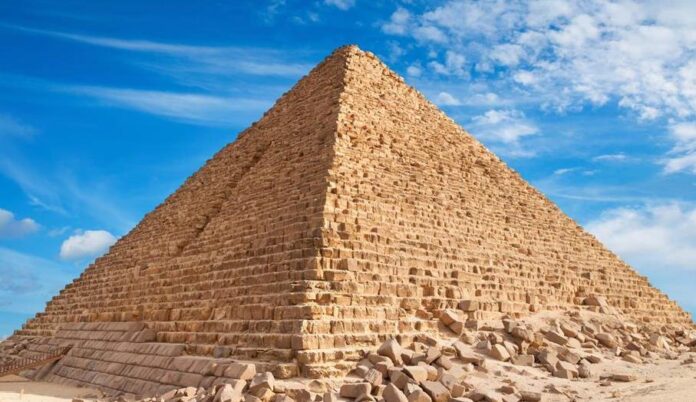The Pyramids of Giza, bathed in the night’s embrace with the ethereal glow of the Milky Way overhead, are a sight to behold. Yet, these iconic landmarks are not the oldest pyramids of Egypt.
A Timeless Monument
Pyramids symbolize the might of ancient pharaohs and showcase the advanced technological capabilities of their era. The question then arises: when was the first pyramid erected? And what was its purpose?
The maiden pyramid of Egypt was built under the reign of Pharaoh Djoser almost 4,700 years ago. Fast forward a millennium, the final pyramid for a pharaoh was built for Ahmose I approximately 3,500 years ago. Subsequent Egyptian rulers chose underground tombs in the Valley of the Kings for their eternal rest.
To put this timeline into perspective, the oldest pyramids stand contemporaneous to Stonehenge, whose initial construction dates back between 4,000 and 5,000 years. However, these pyramids predate the Parthenon, the Great Wall of China, and the Colosseum. Only the Neolithic temple, Gobekli Tepe in Turkey, outdates them, stretching back 11,000 to 12,000 years.
The First of Its Kind
Djoser’s pyramid, with its six distinctive tiers, began as a mastaba—a rectangular tomb, before evolving into a step pyramid. Imhotep, often celebrated as Egypt’s premier stone architect, is credited with overseeing its construction. Marc Van De Mieroop, a noted historian, states that later civilizations revered Imhotep for his wisdom and architectural prowess.
The Reason Behind the Magnificence
The exact reasoning behind the pharaohs’ decision to be buried under pyramids remains a subject of debate. One theory suggests a defensive rationale. The multi-tiered design of the pyramid could deter tomb raiders, who, in earlier times, targeted the flatter mastaba tombs. Reg Clark, an Egyptologist, posits that the pyramids might symbolize a stairway for the pharaoh to ascend to the heavens, but also highlights their structural efficiency in providing a protective canopy over the tomb.
Transitioning to stone from mudbrick (used in older mastabas) also marked a significant upgrade, making these tombs more impregnable.
However, religious motivations cannot be discounted. As Miroslav Verner points out, the increasing prominence of the sun god Ra might have influenced the decision. The growing appeal of the sun cult and the majestic sight of pyramids reaching for the heavens seemed intertwined, leaving scholars pondering the cause and effect.
Massimiliano Nuzzolo believes that the construction of the step pyramid may have intensified the focus on solar aspects of kingship, impacting religious ideology.
A Millennium of Pyramid Building
For over a millennium, pharaohs continued the tradition of pyramid construction. Sneferu, in particular, introduced the world to the first true pyramids at Dahshur, including the uniquely angled Bent Pyramid and the Red Pyramid. The world-renowned Great Pyramid at Giza was a monumental achievement of Khufu, while Khafre contributed another grand pyramid and the enigmatic Great Sphinx at the same site.
The cessation of pyramid construction remains mysterious. Security might have been a concern as, despite their intimidating stature, many pyramids fell prey to ancient looters. The Valley of the Kings, with its natural pyramid-like peak, el-Qurn, offered a more discreet burial option, perhaps ensuring better security.
In conclusion, the Egyptian pyramids are timeless marvels, their stone edifices whispering tales of power, religion, and architectural genius. They stand not just as tombs, but as testimony to the grandeur of ancient Egypt.

